#the cetacea
Explore tagged Tumblr posts
Text
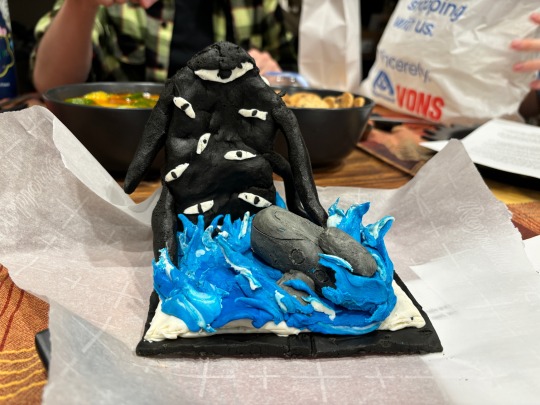
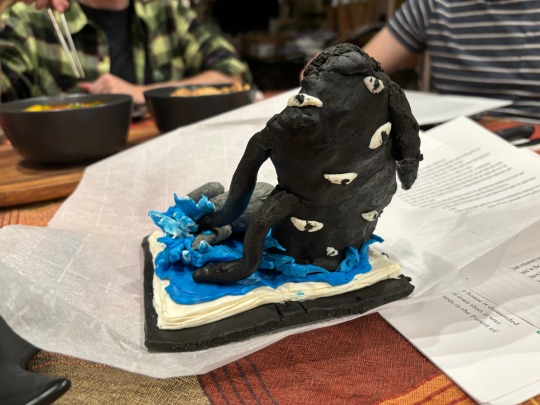
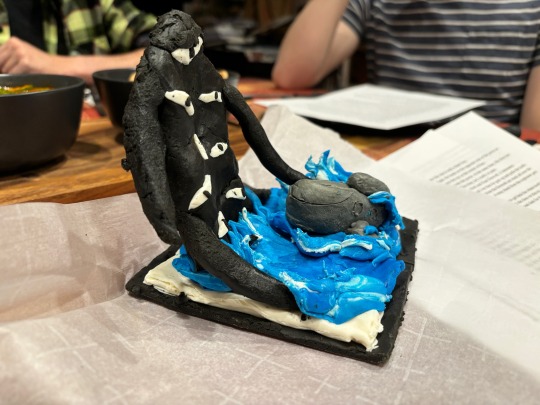
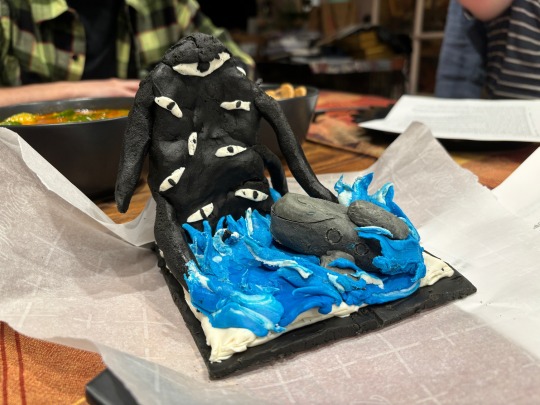
to celebrate me finishing my draft, one of my writing group friends made me my very first fan art out of modeling chocolate 😭 i was so touched. i couldn’t stop looking at it. it’s sitting in my fridge bc i can’t bear to eat it.
89 notes
·
View notes
Text
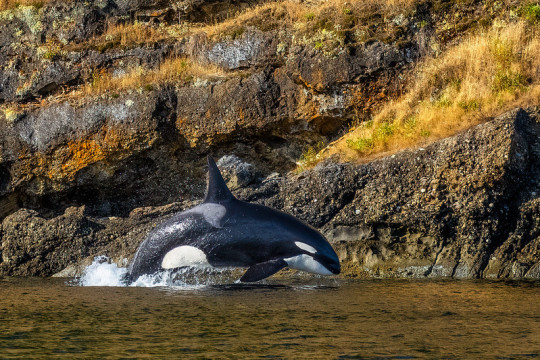
An orca (Orcinus orca) breaches off the coast of the Pacific Northwest, USA
by Guy Schmickle
#orca#killer whale#dolphins#cetaceans#marine mammals#orcinus orca#orcinus#delphinidae#cetacea#artiodactyla#mammalia#chordata#wildlife: usa#wildlife: north america
1K notes
·
View notes
Text

Eden's whale "Balaenoptera" edeni
With menhaden Brevoortia sp.
Observed by haitongyu, CC BY-NC
#Balaenoptera edeni#Eden's whale#Cetacea#Balaenopteridae#cetacean#whale#non-ungulate#fish#menhaden#Brevoortia sp.#Asia#China#Guangxi#Pacific Ocean#South China Sea#Gulf of Tonkin
1K notes
·
View notes
Text

Bowhead whale! The longest-lived mammal, reaching ages of over 200.
[ID: an illustration of a dark grey whale with a white chin swimming in profile to the right. The background is a wavy sea on the bottom and a sky of planets in orbit on top. End.]
2K notes
·
View notes
Text
Pink Dolphins
I've read two posts with absolutely atrocious information about pink dolphins and rather than succumbing to the evil urge to correct people who are WRONG ON THE INTERNET (woe) I'm going to make my own post.
first of all "that's a bottlenose dolphin that's been photoshopped pink/generated by an art bot" yes that's pretty likely but ALSO, real albino dolphins can be VERY PINK INDEED, more than you'd ever think! but only some of the time... when an albino dolphin is exerted or excited their pale skin flushes with blood, making them look very pink (please look up dolphin skin biology sometime I won't get into it here but it's all kinds of wonderfully fucked up)
As an example, this is Supika (スピカ), an albino common bottlenose housed at the Taiji Whale Museum in Japan. As you can see she's nearly white when calm, but a shining rosy pink when excited and swimming about (source)

There are also dolphin species that are naturally pink! The one everyone always hastens to mention is the classic "pink dolphin": the amazon river dolphin (Inia geoffrensis) of Boto myth:

These guys start grey and get more pink as the grey scuffs off, with the adult males generally ending up pinker due to being larger and rowdier. Amazon river dolphins have a keel along their back, large flappy pectoral fins, dark teeth, and a very unique beak and general bone structure: Their neck vertebrae allow their heads to turn much more than other dolphins, which gives them big creases on either side of their necks, almost looking like gills. there's maybe several subspecies or even distinct species and they all look very slightly different, but those are the important traits they have in common.
These traits set them apart from the Indo-Pacific humpback dolphins (Sousa chinensis), which are another commonly grey-to-pink dolphin that are VERY OFTEN mislabeled as amazon river dolphins. imo it's pretty easy to tell the difference because 1.) their photos are taken in wave-chopped open ocean waters not brown/green amazon waters, and 2.) they look so much more... dolphin-like (apologies to the boto) (source)

Most "pink dolphin" photos you see online are either of these guys or of "Pinky", an albino bottlenose living in a brackish lake system in Louisiana in the USA (and her calf), but there's one more I know of that can be slightly pink:
The tucuxi (Sotalia fluviatilis) looks like a smaller cuter bottlenose and also inhabits the amazon. The closely related costero or guiana dolphin (S. guianensis) is its estuary/coastal cousin, and both of them can not only flush strongly pink but also a lovely soft purple! (the costero was also the first type of dolphin confirmed to have electrosense, but we won't get into that here) (source)

And finally, another thing that is important to note is that some oceanic dolphins with pale markings or patches, especially on their bellies, can flush pink, for pretty much all the same reasons this might happen to a pale-skinned human!
(Tursiops sp.) (source)

(Steno bredanensis) (source)

195 notes
·
View notes
Text

An attempted at a size comparison of Romaleodelphis, the recently described "dolphin" from the Miocene of Austria. I couldn't find any good material of the closely related Chilcacetus, so instead based the proportions more on eurhinodelphinids, so take the size with a grain of salt.
Romaleodelphis is a recently described species from the Early Miocene Konservatlagerstätte at Pucking, Upper Austria, which preserves fauna dating to the early Miocene when much of eastern Austria was underwater. A somewhat generalized depiction of this time was actually drawn very recently by @knuppitalism-with-ue (I still got a half-written reblog of his piece sitting in my drafts). Of these animals, the giant sunfish Austromola and the loon Petralca are both from the same locality as Romaleodelphis, which sadly didn't make it in on account of having been named just a week too late.


#paratethys#romaleodelphis#palaeoblr#paleontology#miocene#austria#cetacea#odontoceti#whale#dolphin#prehistory#cenozoic#fossil#size comparisson
117 notes
·
View notes
Note
Southern right whale dolphins
Oh a very cool one, hadn't seen them before! Thank you!


Photos from Gerard Bodineau & Toby Dickson, respectively.
#south america#australia#new zealand#south africa#southern ocean#southern right whale#southern right whale dolphin#dolphin#artiodactyla#cetacea#cetacean#delphinidae#marine mammals#marine biology#sea life#marine life#marine animals#animal polls#poll blog#my polls#animals#polls#tumblr polls#mammalia#mammals#mammal
62 notes
·
View notes
Note
trick or treat!!! 🐋
We're almost a month along but the tricking and treating continues! Thank you for your message ♥ For you another ceta study: a spinner dolphin leaping in front of a dramatic sky.

Once again, the original - gorgeous - photo is from Inaturalist shared under a CC-BY license. The colours and reflections really caught my eye! I spent way too long on this but am really pleased with the result.
I do sometimes wonder how much I learn from these; I'm not sure if I really get a better grasp of painting water/reflections when copying a photo with water/reflections. Like, I'm just repeating what I see, not really getting it. Does anyone have tips for this? Especially when it comes to backgrounds, because those are my weakness.
Either way they are really fun to do in between commission work, and I hope you like it too!
#paintings#Spinner dolphin#Stenella longirostris#Dwarf spinner dolphin#Stenella longirostris roseiventris#could be given the location#but not sure#Stenella#dolphin#cetacea#odontocete#digital art
32 notes
·
View notes
Text
Are we reconstructing early whales right?

Sea lion skull. Note the retracted nostrils, when the living tissues make the nose not that different from other carnivorans like dogs and bears.
Primitive whales get the short end of the stick when it comes to depictions in media. They're drawn as thin, almost reptilian monstrosities. Most notably, their nostrils are almost always retracted, giving them a very odd, saurian profile.

Rodhocetus by Nobu Tamura, one of the better depictions, though still having retracted nostrils.
This makes sense. After all, the skull bones show a retraction of the nostrils in the snout. But this also occurs in other marine mammals; in fact, both pinnipeds and sirenians also have retracted cranial nostrils, but the soft tissue nostrils are still elongated and forward-pointing.

A manatee. Their nostrils are as cranially retracted as those of whales, but the soft tissue nostrils form a short forward facing proboscis.
I believe this should be taken into account when depicting extinct whales. Expecially since some do seem to have forward facing bone nostrils.

Coronodon by Boessenecker et al 2023. Note the strut of nasal bone pointing forwards; could it imply longer soft tissue nostrils?
Food for thought.
#whale#cetacea#cetaceans#paleontology#palaeontology#paleoart#palaeoart#paleoblr#palaeoblr#zoology#science
58 notes
·
View notes
Text


#polls#animal polls#cetacea tournament#atlantic spotted dolphin#atlantic white sided dolphin#dolphin
11 notes
·
View notes
Text
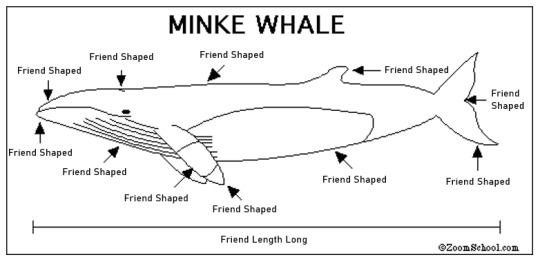
A helpful reference
53 notes
·
View notes
Text

A Pacific white sided dolphin (Lagenorhynchus obliquidens) in Cordell Bank National Marine Sanctuary, California
by NOAA/Jamie Hall
#pacific white sided dolphin#dolphins#cetaceans#marine mammals#lagenorhynchus obliquidens#lagenorhynchus#delphinidae#cetacea#artiodactyla#mammalia#chordata#wildlife: california#wildlife: usa#wildlife: north america
198 notes
·
View notes
Text

North Atlantic minke whale "Balaenoptera" acutorostrata acutorostrata
Observed by pcrosson, CC BY-NC
#Balaenoptera acutorostrata acutorostrata#North Atlantic minke whale#Cetacea#Balaenopteridae#cetacean#whale#North America#United States#Massachusetts#Atlantic Ocean#Gulf of Maine
259 notes
·
View notes
Text

Amazon river dolphin! The pink one!
[ID: a digital illustration of a pink and grey dappled dolphin leaping, facing to the right on a dark teal background. It is smiling and is surrounded by decorative, stylized waves and splashes. End.]
223 notes
·
View notes
Text
Happy world pangolin day, shout out to the time I had to teach my whole mammalogy class about pangolins and also write a 14 page paper on them, which ended up with me having a mental breakdown and making multiple posts about leaving dead rats in my professors office
#to be clear there were no dead rats#at least not becuase of me#there are definitely things living in the walls of that building and some of them may have died#but like this guy set up the class so each student had to give a like 40 minute lecture on an order of mammals#I chose pangolins (because someone else had already taken cetacea)#and the combo of it being a small order and talking fast from anxiety meant I only took like twenty minutes#so of course I got points off#but everyone else seemed to like my presentation so it was fine#and pangolins are cute I guess#j rambles
10 notes
·
View notes
